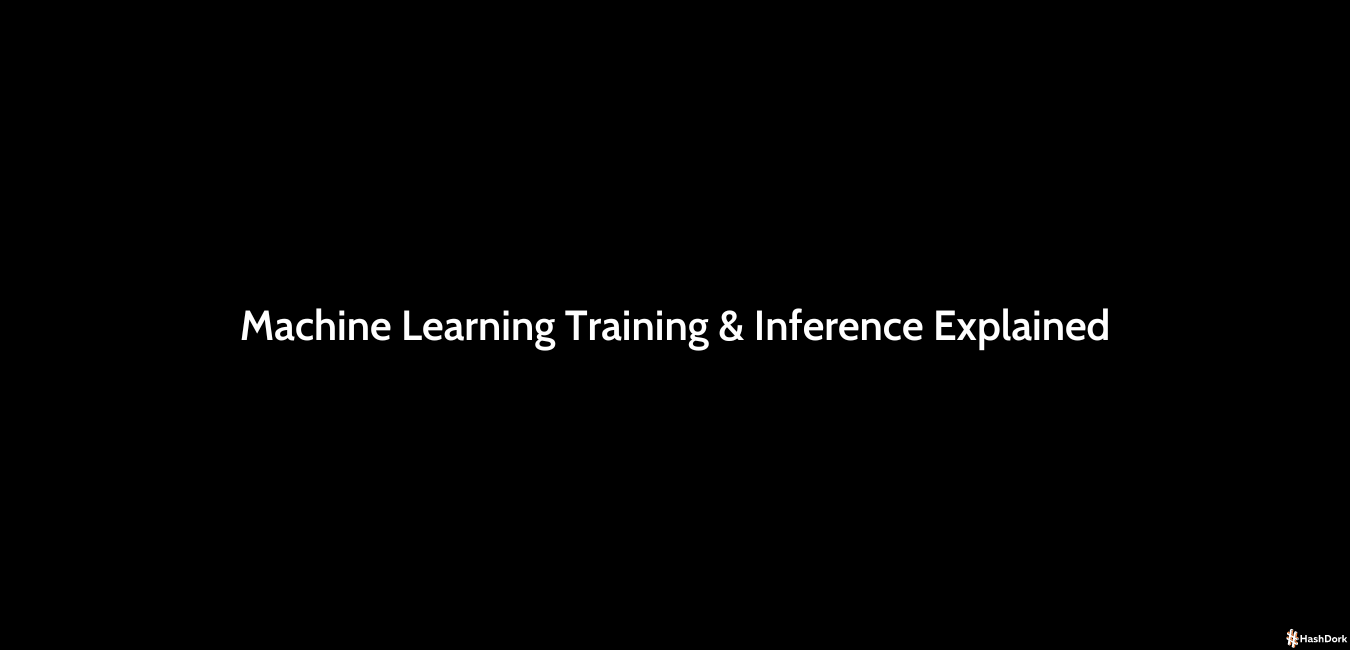Table of Contents[Hide][Show]
We are witnessing a grand AI revolution!
Each day we get a new app that has amazing capabilities. With many apps and programs that use AI and machine learning entering our lives; we should take more time to learn about these.
In this post, we will explore machine learning in detail. Also, we will specifically focus on topics of Machine Learning Traning and Inference.
Let’s start with fundamentals.
What is Machine Learning?
Many times we see the terms “machine learning” and “artificial intelligence” be used together. So, let’s first clear that one out. Machine learning is a branch of artificial intelligence. It involves training algorithms to produce data-driven predictions or choices.
Besides, it enables systems to enhance their performance automatically based on past experiences.
Artificial intelligence, on the other hand, is the imitation of human intellect. Thus, computers are meant to think and act like humans. It comprises several subfields such as machine learning, computer vision, and natural language processing.
Development of a Machine Learning Models
A machine learning model is an algorithm. We create these algorithms to automatically enhance performance through data learning. We use them to examine input data, anticipate future outcomes, or make judgments.
Let’s give an example. To categorize photographs as either being of a flower or a cat, a model can be trained to identify images.
And, it can decide whether the picture is of a flower or a cat. The main principle of machine learning is that the model’s performance should continuously be improved. It should be reacting well to changing parameters in the data.
Mostly, we perform this machine learning training on Jupyter Notebook, which is a fantastic tool for the any-data related project.

Training of a Model
The process of teaching an algorithm to generate predictions or take actions based on input data is referred to as “training”. During training, the system’s parameters are modified to enable the algorithm to work. Ultimately, we are trying to produce precise predictions on brand-new data.
Supervised and unsupervised learning are the two primary categories of machine learning.
Supervised Learning
A labeled dataset is used to train the algorithm in supervised learning. In this type of machine learning, the expected result is specified for each input. The algorithm makes predictions on fresh data. Also, it learns the connections between the inputs and outputs using this information.
Because the model receives supervision on what the desired outputs should be, this sort of learning is referred to as “supervised.”
Applications like speech recognition, image classification, and natural language processing all make use of supervised learning. In these applications, the algorithm is trained on big labeled datasets. Hence, we can forecast fresh, unforeseen data.
Also, input-to-output mappings must be learned to be as accurate as possible.
Finding the most accurate mapping between inputs and outputs is the aim of supervised learning.
Unsupervised Learning
Unsupervised learning is a subset of machine learning. We train the algorithm on an unlabeled dataset. Hence, the models get to detect patterns or correlations in the data. We don’t need to specifically define what the outputs should be. This sort of learning is referred to as “unsupervised”. This is because the model receives no explicit guidance on what the outputs should be.
Applications like anomaly detection, clustering, and dimensionality reduction require unsupervised learning. In these applications, the algorithm must recognize patterns or correlations in the data. And, it is without explicit instruction after being trained on a sample of unlabeled data.
Unsupervised learning aims to discover hidden patterns or structures. We can use it in a variety of tasks, such as data compression or grouping together similar things.
Machine Learning Optimization
The optimization process is essential in the construction of a machine-learning model. The purpose of optimization is to reduce the difference between the predictions of the model and the actual values in training data.
This process assists the model in learning the links between inputs and outputs. Hence, we can get the most accurate predictions possible.
By reducing error, the model may generalize better to new, previously unknown data. Thus, it can produce more robust and dependable predictions.
In machine learning, the optimization process is accomplished by the use of algorithms such as gradient descent. So, our algorithm continuously adjusts the parameters until the error is minimized. The optimization procedure is necessary for the model’s predictions to be accurate.
Machine Learning’s Training Dataset
A training dataset is a set of data that gets used to train a machine learning model. We train the model on how to generate predictions by displaying examples of inputs and outcomes. Based on this training data, the model modifies its parameter.
Hence, the accuracy of its predictions is assessed using a distinct dataset, the validation set.
The training dataset should be reflective of the problem being solved. And, it should contain enough data to adequately train the model. The model’s predictions may be inaccurate if the training dataset is too small.
Or, it may not be very representative. As a result, extensive pre-processing of the training dataset is a requirement. Hence, we can guarantee that the model has the highest success.
An Example of Training:
Let’s give an example to understand the training process.
In this example, we are assuming we have a dataset named “music.csv”. It has values of gender, age, and genre. Hence, it predicts which genre of music a person is listening based on their age and gender.
This is the Python code for a simple machine learning training using the scikit-learn library: The logistic regression approach is used in this code to train a model on the data and then evaluate its accuracy on the test data.
The data is initially put into the pandas data frame before being divided into features (X) and targets (Y) (y). After then, the data is divided into training and testing sets, with 80% of the data utilized for training and 20% for testing. The model is then trained on the training data before being tested on the test data.

Inference in Machine Learning
The process of using a trained model to make predictions on fresh data is referred to as inference.
To put it another way, it is the application of information gained during the training. The model receives fresh data and generates a prediction or judgment based on the patterns it discovered in the training data.
The model’s predictions will be accurate depending on the quality of the training data. Also, it will depend on the model architecture chosen, and the techniques used to train the model.
Importance of inference in applications
In inference, we get to enable the model to provide outcomes for a specific goal. These can vary such as image classification, natural language processing, or recommendation systems. The inference step’s accuracy has a direct impact on the entire performance of the system.
It is critical for the actual implementation of machine learning models in real-world applications.
The input of new, unknown data
The inference process in machine learning begins with the addition of fresh data to the model. This data must get preprocessed to match the input format used to train the model.
Predictions based on learned patterns
The model then utilizes the input data to make predictions based on the training data’s learned patterns. The accuracy of the predictions is dependent on the training data quality and techniques utilized.
An Example of Inference:
Like the previous example; we will first train the data and then implement inference. In this case, we have used RandomForestClassifier instead of LogisticRegression.
We are again producing predictions in Python using the sci-kit-learn toolkit. Assume we’ve trained a model and have a data set called X test on which we wish to make predictions.
This code predicts on the test data set X test using the trained model’s predict function. The predictions are then saved in a data frame, with the first five shown.

Inference Performance Influencing Factors
Several important elements influence the performance of inference in machine learning.
Inference stage speed
Inference speed is a crucial concern since it directly affects system performance. Faster inference times can allow for faster decision-making or prediction. Also, it boosts the model’s usefulness.
Prediction accuracy
Another key component is the accuracy of the predictions created during inference. This is because the model’s goal is to provide outputs that are as near to the genuine values as feasible. The model’s output accuracy is dependent on the quality of the training data.
Also, it is very related to the model architecture.
The significance of optimizing the inference stage
Given the importance of inference speed and accuracy, it is critical to optimize the inference process for efficient results. This might include strategies like shrinking the model’s size. Or, you can leverage hardware acceleration, or improve the input data processing processes.
Conclusion
Finally, in machine learning, training, and inference are critical processes. We need to have the particular knowledge and abilities to implement them efficiently. Training allows the model to make predictions, whereas inference allows the model to make predictions based on fresh data.
Both play critical roles in determining a model’s success and accuracy. So, keep them in mind in your next project!







Leave a Reply